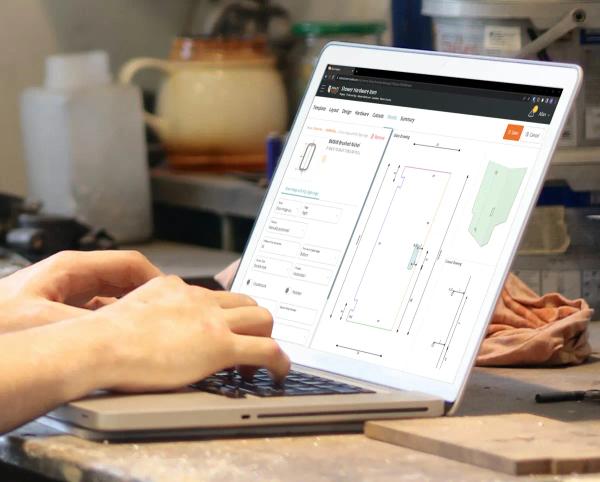Glaziers, what do you do when a customer doesn't reply to your quote?
04 May 2017
Glaziers, what do you do when a customer doesn't reply to your quote?
Quoting can be a costly exercise. The time it takes to go on-site, measure, estimate, then communicate to the customer is far from trivial. Taking a few extra steps to ensure you win the jobs you quote should be a no-brainer for your business. However, within the building trades following up after quoting is almost non-existent. Only 16% of businesses said that they followed up regularly and of those that did only half said they would follow up more than once.
Why follow up?
Ultimately the answer is easy, to win more jobs. But how does following up help?
Shows your prospects that you care about the sale
Everyone wants to feel valued and important. By following up you are telling them that they matter to you. You are engaged in their problem and ready to help them solve it.
Shows that you’re organized
By touching base a week or so after sending through a quote you are showing them that you are organized and capable. Consciously or subconsciously this will impact how they see your business as a whole.
Breaks the ice
Often people feel lost when it comes to the trades, particularly glaziers. The number of prospects who are too shy or too proud to ask a question for fear of seeming stupid might surprise you. By reaching out and asking them if they have any questions big or small, you are giving them an opportunity to ask what they might not bother or remember to ask otherwise.
Builds a relationship
InsideSales.com reports that trust, not price, is the most influential factor when prospects choose who to go with. A survey of buyers showed that a whopping 89% are “wary of the cheapest price” and will pay slightly more to go with “someone they trust”. How can you build trust if you only ever interact with a customer once? By contacting them and offering your help you are giving them a chance to get to know you better.
Should I email or call?
In most cases the answer will be both. Your first follow up might be an email to the prospect, perhaps one week after you send the quote. The second follow up could be a phone call.
Follow up emails
A simple email asking if they have any questions or need clarification on any points covered in the quote is a great start and will not offend anyone. An email will serve as a gentle reminder and prompt them to get in touch if they need any more information. But if they want to, they can just ignore it. So what can we do to stop that from happening?
A great follow up email will try to offer them something more. If you have a big job, review your original quote and see what other information you can send them to help them make their decision: a manufacturer’s brochure showing the product you quoted them on, or an explanation of your lead times and how soon you think you could fit them in if they decide to go ahead (be careful not to make them feel pressured into going forward by telling them you will have no time next month. This is never a good approach.)
Calling
Write down a short introductory script so that the first 15 seconds of your call go smoothly:
“Hi John, Sam here from Smart-Builder. We sent you a quote for a new shower last week and I wanted to see if you had any questions about what we sent through? Did you understand our pricing and the options we offer?”
Make detailed notes during the call so you remember any questions they asked and note down your opinion on how far along the sales journey they are.
- For example, if they are asking you lots of questions about guarantee, lead times, how long installation takes etc., they are probably close to making a decision
- If however they are polite but don’t ask any questions at all, chances are they have decided to go with someone else or are not ready to buy.
By making notes on your follow up calls, you can gauge when would be appropriate to get in touch again.
Follow-up Timing
There is no silver bullet with follow up timing. Ultimately it will depend on your prospect and their schedule. If they want to make a decision before the end of the week, then following up a day or two after sending the quote is appropriate. However, if they are just feeling things out and don’t have a fixed deadline in mind, a week after the quote is sent is probably best.
Example follow up schedule: A good starting point would be to email 5-7 days after first sending the quote, and then calling a week after that. After that you will need to judge the situation to decide whether you should keep touching base or whether it would be better to drop it. I would only ever drop the follow up after having spoken to the prospect over the phone. Just because someone doesn’t reply to your email does not mean they aren’t interested.
In summary
Following up after quoting is a simple exercise that can have a real impact on your quote conversion rates and overall impression you leave with your sales enquiries. Make sure you’re recording your follow ups in a customer relationship management system (CRM) so you have up-to-date information at your fingertips.
Related Blogs
26 January 2024
Why Fabricators need a Glass E-commerce Platform
Going digital isn't just a tech trend—it's a game-changer and could be for your business as well. Let's dive into why introducing an E-commerce portal is a smart move for your glass fabrication business by considering the pros & cons and how Smart Glazier Software can help navigate you into the digital age.
28 October 2023
Smart Glazier Software set to shine at GlassBuild 2023
2023 has been a huge year for us here at Smart Glazier Software, and we're excited to head into GlassBuild America this year and take part in the most significant event in the Glass Industry across the Western Hemisphere.
05 October 2023
Our Transformation: Becoming Smart Glazier Software
On August 1, 2023, a significant transformation took place as Smart-Builder evolved into Smart Glazier Software. Dive into our blog to discover the motivations behind this rebrand and the implications it holds for our organization.



